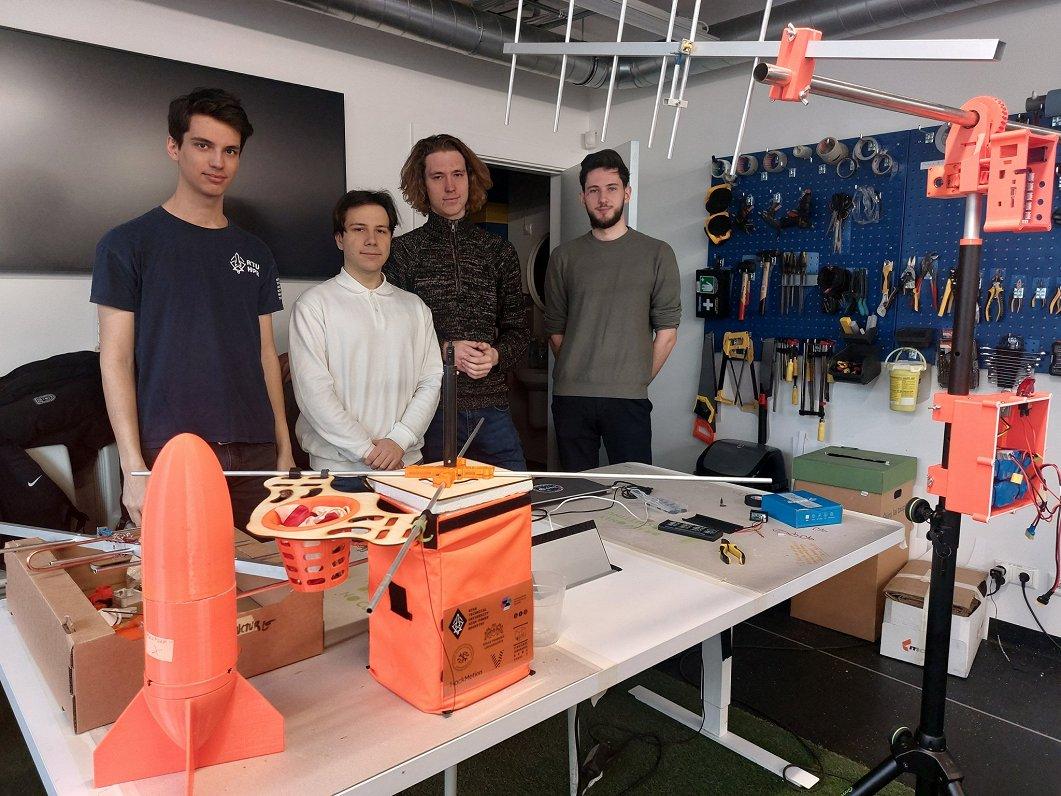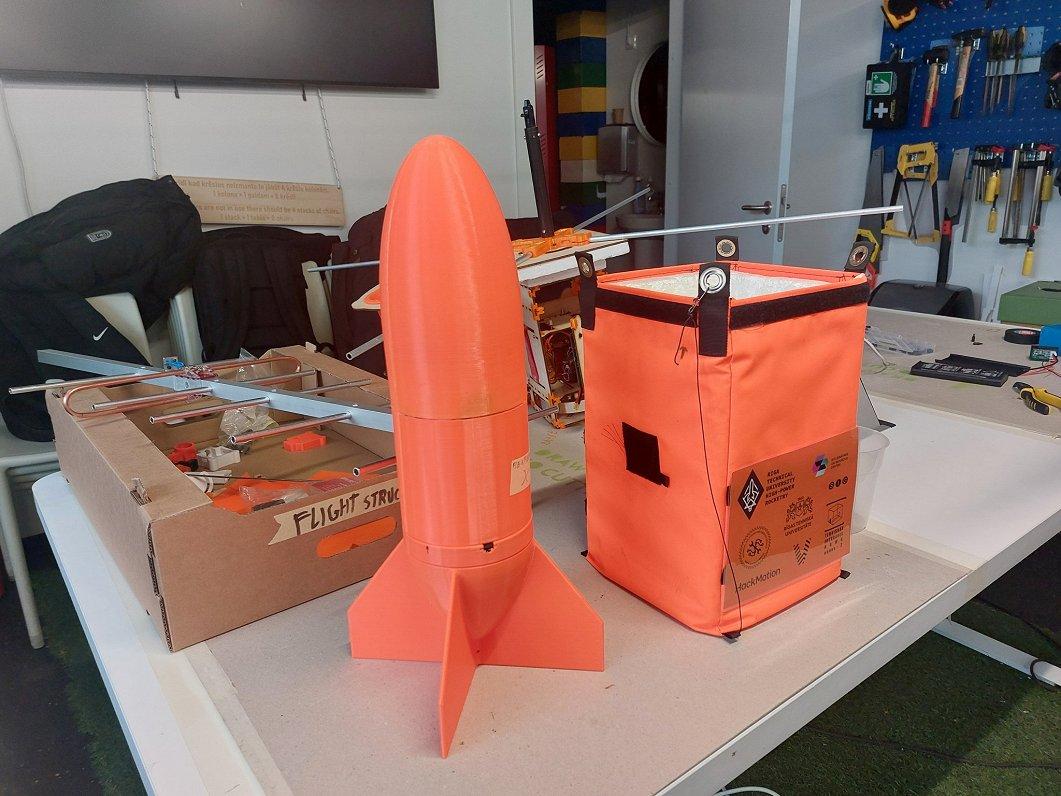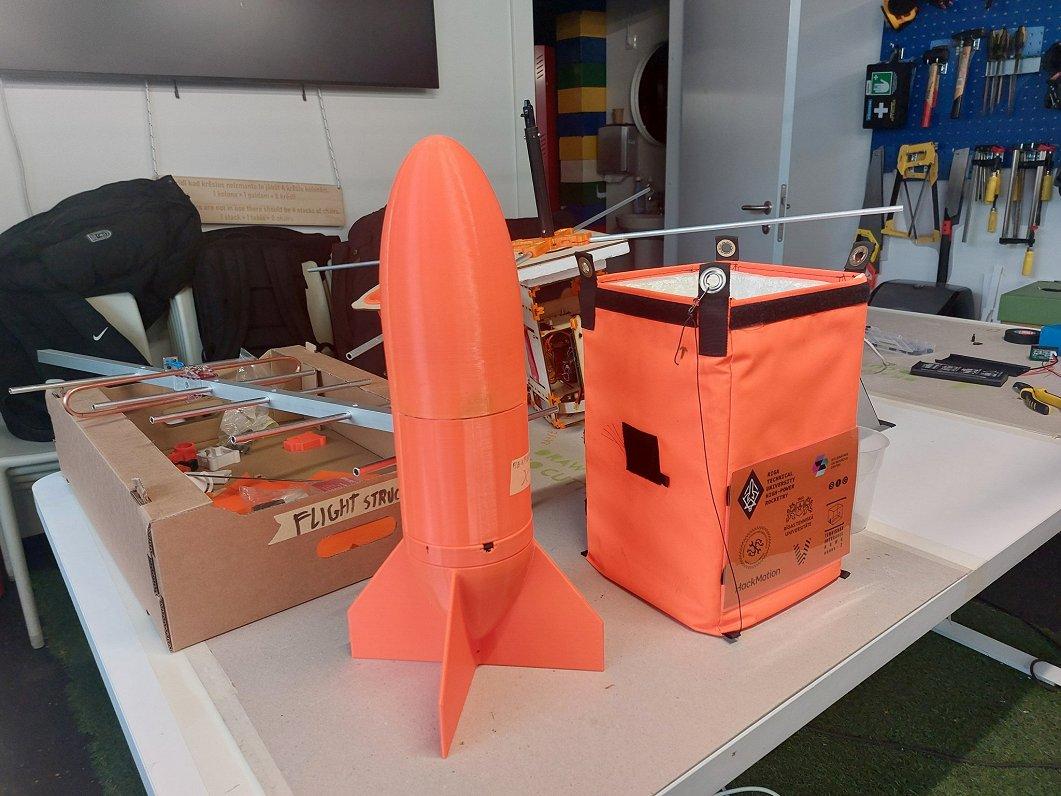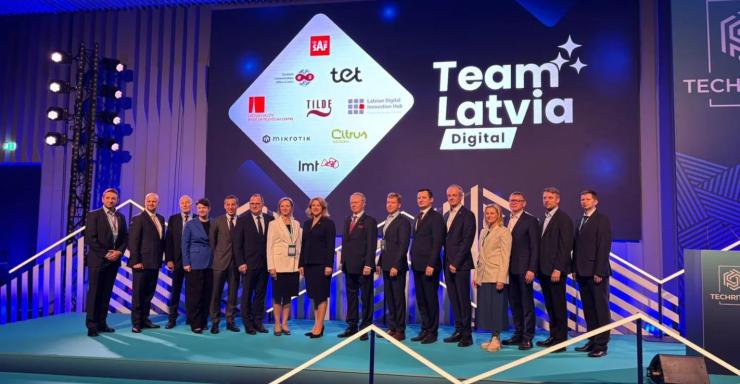Nearly 14 million euros will be available to support innovation for students, and new projects can be launched by the end of the year. Meanwhile, in the previous grant program, students of Riga Technical University (RTU) began developing technologies for rocket launches, and the team continues the work with the support of a company.

RTU Designs Innovative Rocket Launch Platform
Latvian university students will once again have access to innovation grants this year, with plans to involve over 6,000 students who will develop prototypes of their ideas over the next four years. In the first phase (2020–2024), with this support, for example, students from Riga Technical University (RTU) and Engineering High School worked together to build high-powered rockets and their launch systems.
"The launch platform is relatively small – half a meter by half a meter. It contains all the internals, electronics, batteries, and stabilization system – all within a wooden frame. Then, everything is placed inside an insulating heat shield to prevent any problems at higher altitudes. The platform also has a release mechanism, which allows us to detach from the balloon when we want, so we can better plan the flight. There's also a parachute system," said Daniels Strankals, a student from RTU’s Faculty of Civil Engineering and Mechanical Engineering.
The team has continued their work even during the program's break, as they have been financially supported by the defense industry company Frankenburg Technologies.
As a result, in the spring, they plan to test the launch of small rockets not from the ground but from a platform in the air, using a stratospheric balloon that will reach altitudes of tens of kilometers, Strankals explained.
"In early 2022, we realized we wanted to launch a rocket into space, above 100 kilometers in altitude. With typical launch technologies in Latvia, making a very large rocket would be too expensive – the rocket would cost several hundred thousand euros, and we'd need a launch complex, which is physically unavailable in Latvia. So, we thought of an innovative solution where we could try launching a rocket from about 25 kilometers in altitude. We plan to achieve this by lifting a launch platform with a weather balloon, and then launching the rocket from there because the air resistance at 25 kilometers is much lower, and the rocket could then reach the 100-kilometer height," Strankals explained.
Testing Their System for Biological Experiments in Microgravity Conditions
While the rocket launch at 100 kilometers altitude will be tested later, in a few months, the students plan to test their launch platform system for biological experiments in microgravity conditions. A capsule containing cells will be lifted to 25 kilometers and released in freefall.
"We have also collaborated with the Latvian Biomedical Center, exploring how stratospheric flights could be beneficial. In cooperation with them, we are designing a microgravity experimental capsule, which is similar to a half-meter rocket, except it has no motor. The main idea is to release it so that it experiences weightlessness during freefall, where we can study its effects on cells," Strankals explained.
"We need to ensure that we transport the capsule to the Biomedical Center, where these cells will be placed in a special sealed chamber that will maintain a consistent, favorable temperature. As we ascend to 25 kilometers, we go through several atmospheric layers, where the temperature can drop to minus 50 degrees, so heating is required. Then, the capsule is dropped, and the parachute is deployed after a while. It falls to the ground, and we will go to retrieve it with the Biomedical Center. They will analyze the cells and tell us if the concept works," he added.

Each Team Member Has a Role
Daniels explained that this rocket launch concept could potentially reduce the costs of space exploration or satellite component testing in the future. However, the young team has been working on it for years and enjoys spending long evenings solving complex problems, as they want to constantly improve their practical skills.
Over the years, the team has regularly changed its composition, with students passing on their knowledge to one another.
Currently, in order to develop the rocket platform prototype, each member of the team has their own specific role, added Gundars Matīss Melderis and Nils Lucāns.
"I’ve been part of the team for about a year and a half, and I'm responsible for the balloon platform. I lead several people working on mechanics related to the platform. I mostly work on design, production, simulations, and everything related to the balloon," said Nils Lucāns.
"As the main programmer of the team, I develop the software for both the balloon platform and the biological experimental capsule, as well as the base station that tracks the balloon. My challenge is communication because we need to constantly stay in communication with all of these devices while they’re flying so we can send commands at any time and perform certain actions. Additionally, I work on ensuring stable thermal conditions, both during ascent and descent," explained Gundars Matīss Melderis.
Meanwhile, Engineering High School student Kristaps Grava has been part of the team for only a year and is responsible for the ground infrastructure, ensuring that signals are received from the balloon platform.
"Here, next to me is what we call the rotator, which has antennas. These antennas are always rotated to keep perfectly aligned with the balloon platform so that we get the best signal from above. Initially, I was a mechanical engineer in the team, making small parts, but now, the last thing we’re doing is putting everything together that we had designed," Grava shared.
Innovation Grants to Support Students
By 2029, the total funding for innovation grants will be nearly 14 million euros. Jānis Paiders, Deputy Secretary of State for Science and Innovation Development at the Ministry of Education and Science, noted that universities are developing applications and will organize innovation idea competitions by the end of the year, where students can receive grants of about 13,000 euros for working with existing innovations. Small grants of around 3,000 euros will be available for the initial development and testing of ideas.
"The program is designed to provide higher public funding support. One of the changes is that we’ve lowered the threshold for expected private sector co-financing, as it was identified as one of the barriers in the previous period, discouraging many businesses from participating. Companies are already involved in various ways with their knowledge, devices, and other resources," said Paiders.
"It is important for us that companies participate with a level of co-financing that is not a barrier in Latvia's context. However, it is not a prerequisite that all ideas are automatically commercially viable and used. We cannot expect that from a student team just starting out, especially since many of these ideas are still in the testing and prototyping phase," he added.
The new innovation grant program also sets a requirement that at least 30% of the applications should be related to artificial intelligence technologies, internal and external security, and educational technologies.


